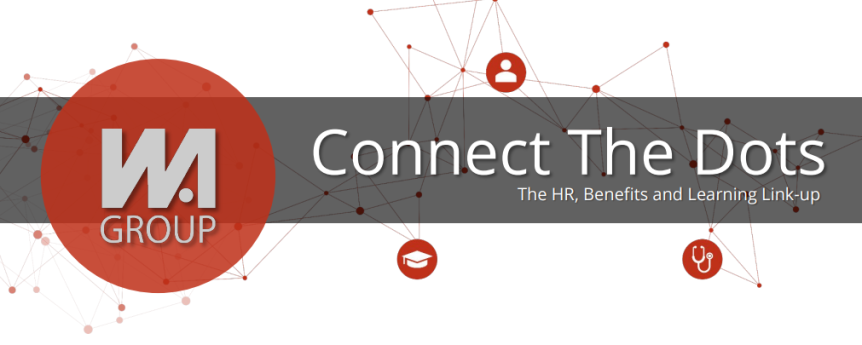Question of the Week
By: Mineral
What do we do if we find a discrepancy in a background check?
It depends on the seriousness of the discrepancy, whether the information is pertinent to the job itself, and whether the candidate would be ineligible for the position. You probably don’t need to make an issue of a minor variance like a candidate telling you they started a job in the month of April, but their background check saying they began in May. However, a major difference, such as the candidate apparently not having a college degree they claimed to have or a criminal history they didn’t disclose, likely warrants further review.
This Q&A does not constitute legal advice and does not address state or local law.
PCORI Fee Reminder
By: Benefit Comply
The PCORI fee for group health plans that ended sometime during 2023 must be reported and paid by July 31, 2024. Health insurance carriers pay the fee on behalf of fully-insured plans, but employers are responsible for reporting and paying the fee for any self-funded group health plans, including HRAs. The fees due in July 2024 are as follows:
- $3.00 per covered life for plan years ending in January – September 2023.
- $3.22 per covered life for plan years ending in October – December 2023.
Average covered lives used for reporting and paying the PCORI fee may be determined using one of three methods: (i) the actual count method; (ii) the snapshot method; or (iii) the Form 5500 method. The fee is reported and paid by employers sponsoring self-funded group health plans using quarterly excise tax Form 720, Line 133(c) and (d), and should be filed for the 2nd quarter ending June 30th, 2024. NOTE: A draft Form 720 has been released with updated PCORI fee amounts, but we recommend waiting until the final version is available to report and pay the fee for plan years ending in 2023.
Managing Costs
By: WA Group
Employers continue to be concerned about healthcare costs due to inflation, increased provider costs, and rising pharmacy expenses. Managing these factors strategically is crucial to avoid eroding benefits budgets and straining financial resources.
Managing costs to meet budget is the #1 employee benefits priority for employers. The Impact Employers consistently try to absorb the impact of health plan changes or increases, limiting what the workforce feels, but find it increasingly hard to do so. We found:
- 40% had a 2024 medical renewal increase of 7% or greater
- 64% made some change to their 2024 medical plan:
- 13% switched their carrier/TPA
- 33% raised employee contributions
- 22% changed plan design
- Few changed their funding mechanism or type of medical network.
- 75% felt rising provider costs would negatively impact renewal. 60% felt inflation would.
Pharmacy’s Contribution Skyrocketing pharmacy costs, driven by the price of prescription medications and specialty drugs as well as advancement in science and a robust pipeline, add yet another layer of complexity:
- 39% indicated that specialty drugs are the biggest prescription drug-related challenge
- 56% plan to adjust copays and plan design to manage pharmacy costs, and 25% will carveout/exclude specialty drugs
Key Takeaway: A proactive and well-informed approach to employee benefits management is crucial to strike a balance between offering competitive packages and controlling expenses in the face of these challenges.
Empower Your People
By: VAST University
Incentives & Engagement Employers are significantly focusing on employee education and engagement regarding their benefits programs. This theme is evident through the intention to offer financial incentives to drive engagement and behaviors and focus on education and access to the benefits program.
Carrot or Stick? As employers grapple with rising healthcare costs and mitigating the impact to employees, many utilize incentives to influence behavior and engagement in their benefits programs.
- Carrot
- 23% plan to offer financial incentives to drive engagement
- 33% have a wellness contribution differential
- 66% contribute some amount to employees’ HSAs
- Stick
- 33% employ a spousal contribution surcharge
- 28% utilize a tobacco contribution surcharge.
Employee Experience & Access Employers continue to monitor how and when their employees utilize and engage with their benefits, and we found:
- 80% use digital channels for annual enrollment
- 19% are focused on implementing or optimizing their HR technology (this approach increases in popularity annually)
- 67% said the greatest opportunity is to increase education of the benefit program in the future
- 74% use digital methods to communicate benefits information, 62% host group meetings or benefit fairs, and 65% use printed materials
- 19% are focused on improving employee’s experience with pharmacy
- 65% offer domestic partner coverage, with most offering both same & opposite sex coverage
Key Takeaway: Driving engagement in the benefit program requires a clear, transparent, and multi-channel approach. Employees must be well-informed about their benefit options and incentivized to make healthy choices for all stakeholders to receive value from the benefit program.
Upcoming Webinars
Health Savings Accounts (HSAs)
As more and more employers offer at least one high deductible health plan (HDHP) option, employers play a role in educating their employees about HSAs. The goal of the webinar will be to provide employers with some tips and tricks to help employees navigate HSA eligibility, HSA contribution limits, and HSA reimbursements.
June 20, 2024 @ 2pm
Registration link: https://assurexglobal.zoom.us/webinar/register/WN_Yr_mMqFxThyDKF4hUljJ3A#/registration
Presenters: Bob Radecki, Principal, Benefit Comply LLC & Regan Debban, J.D. MBA, Principal, Benefit Comply LLC

